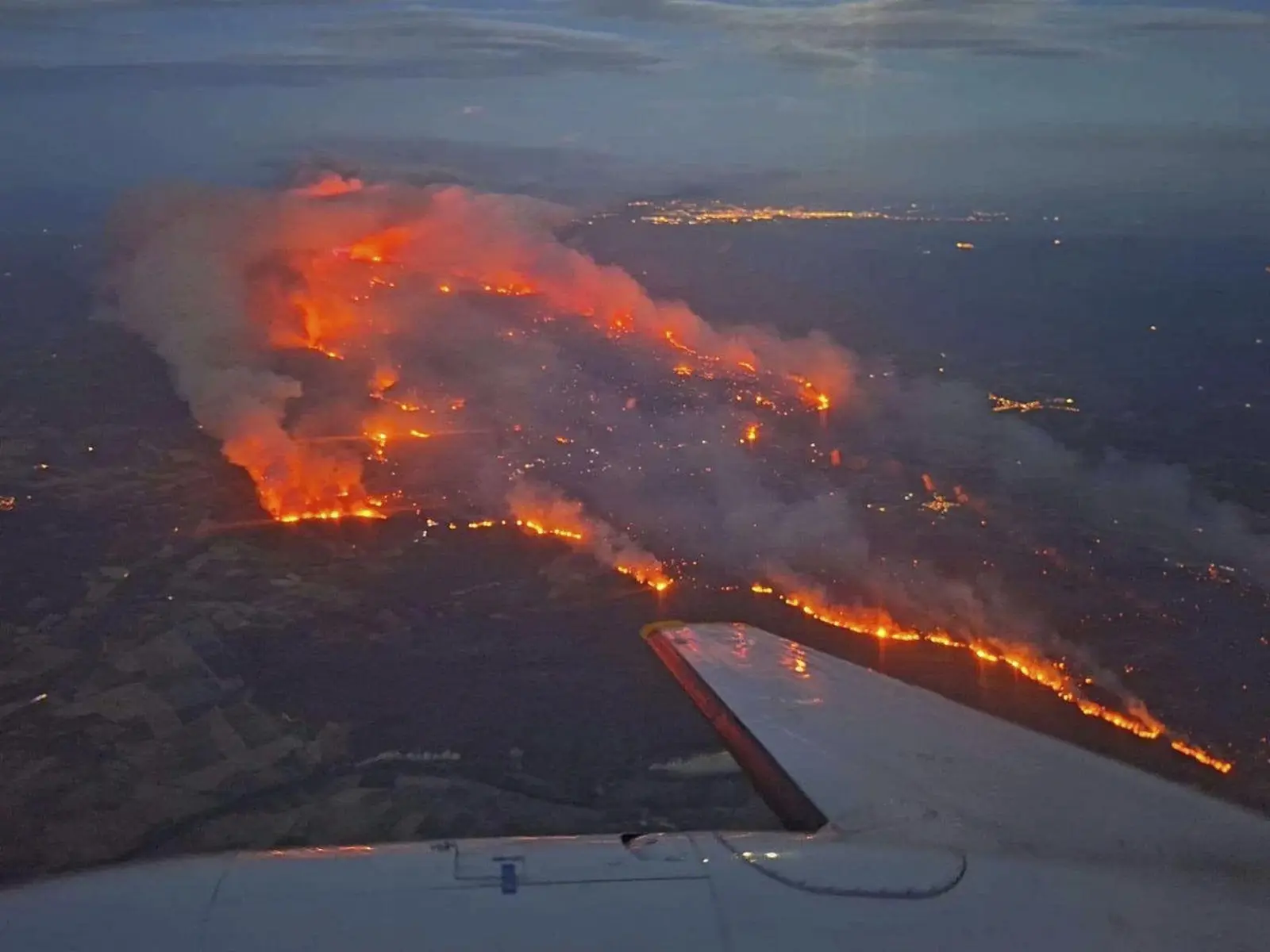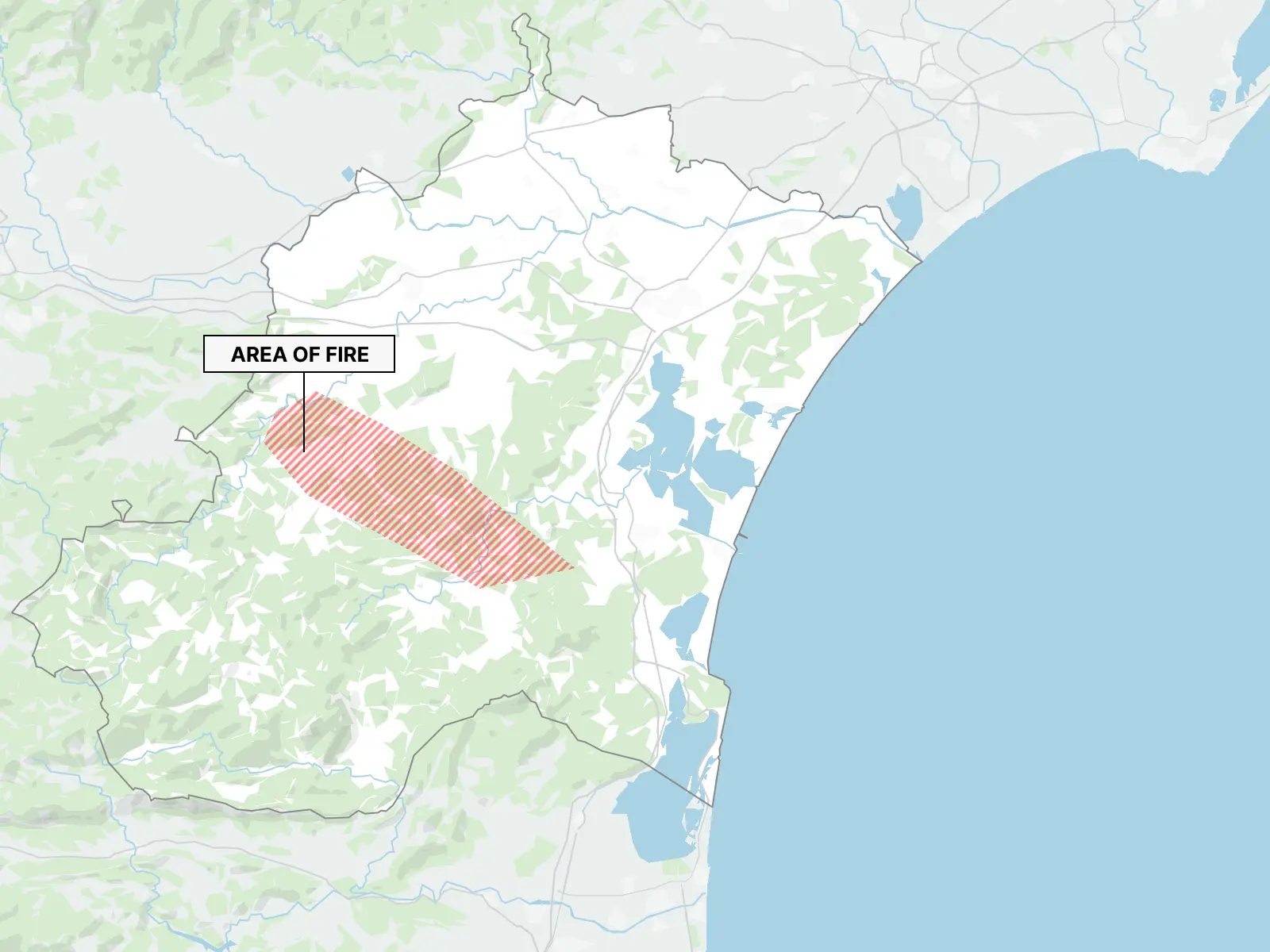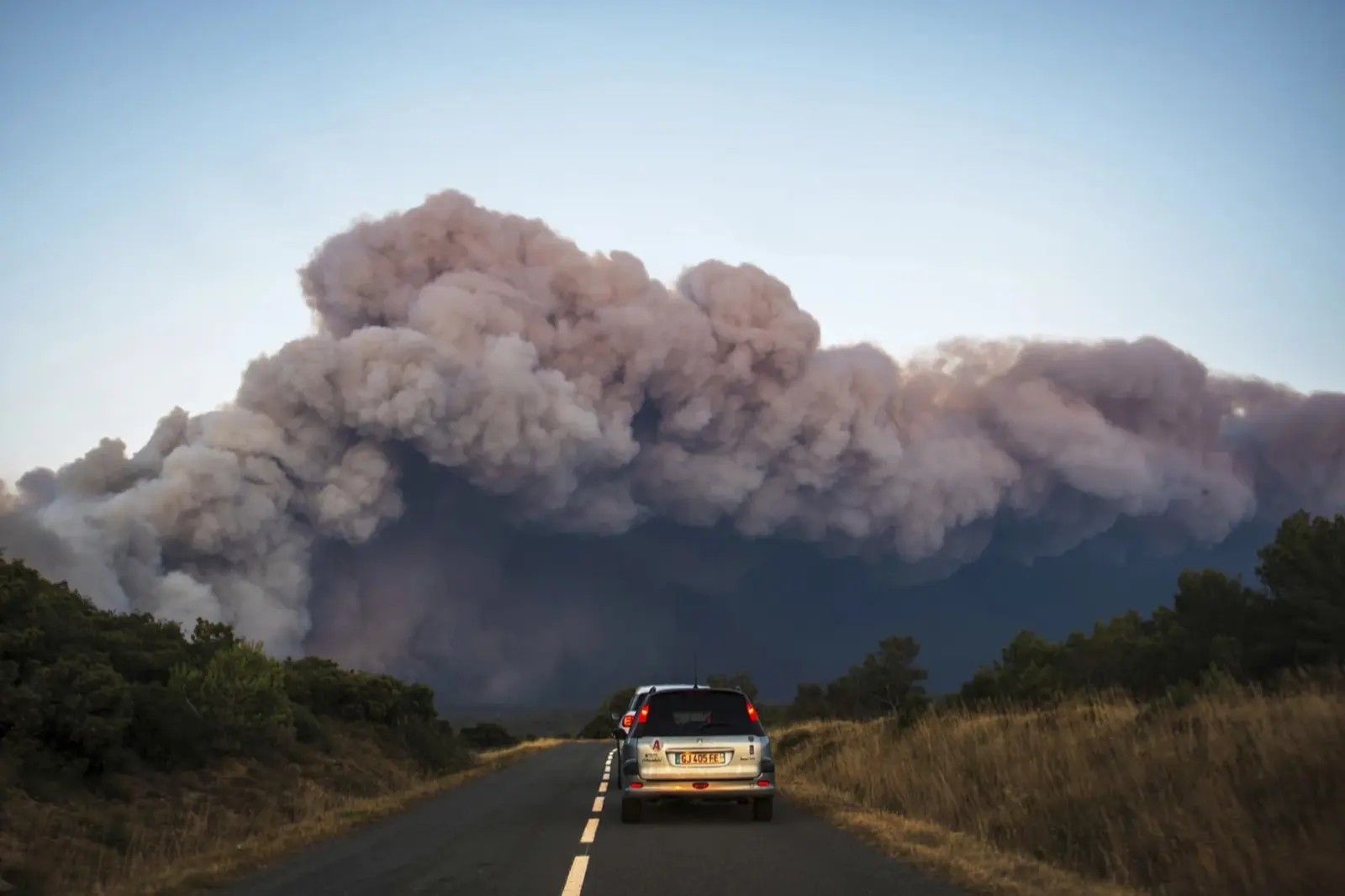France is facing its worst wildfire since 1949. Over 15,000 hectares of land in the Aude region have burned, destroying 25+ homes, 30 vehicles, and forcing entire villages to evacuate. One person has died, and at least nine people, including firefighters, have faced injuries. The flames have turned peaceful towns near the Spanish border into disaster zones. But the fire itself is only part of the problem.
Toxic smoke is now spreading across Southern France, affecting areas far beyond the fire. Even where official air quality ratings say conditions are “moderate” or “good,” people are reporting breathing issues, burning eyes, coughing, and heavy smoke in the air.
This smoke contains dangerous pollutants like PM2.5 and carbon monoxide. It can travel long distances and cause serious health problems—especially for children, seniors, and those with asthma or heart conditions. This France wildfire is not just a natural disaster. It’s a warning sign of how climate change is making extreme events more intense, more dangerous, and harder to control.
A Historic Wildfire Shakes Southern France
The summer of 2025 has brought France face-to-face with one of its most destructive environmental disasters in modern history. The Aude wildfire, now officially recognized as the biggest wildfire in France in 80 years. Because it has burned through over 15,000 hectares of forest, agricultural land, and residential zones. It is mainly in the southern part of the country near the Spanish border.

- The wildfire erupted in the Aude department and has rapidly spread due to extreme heat, wind, and drought conditions, devastating large rural areas, including forests and vineyards.
- Over 25 homes charred to ashes, forcing entire villages into sudden evacuation during nighttime hours.
- The human toll continues to grow, with at least one fatality reported (an elderly woman who could not evacuate in time), along with multiple injuries to civilians and firefighters.
- Infrastructure severely impacted: roads blocked, power lines have collapsed, and emergency services stretched thin across the region.
Air Quality Concerns: What Are People Breathing Right Now?
As fires continue to rage, smoke and pollutants have transformed the air into a dangerous cocktail of particulate matter and toxic gases. The need for real-time AQI data has become essential for people living not just near the fire, but across southern France.
- Real-time air quality measurements may not reflect short-term, localised pollution spikes caused by shifting wind directions. Residents within 30–50 km of the fire zone are still experiencing periodic surges in smoke and PM2.5 levels.
- Areas directly downwind from the blaze are experiencing temporary but dangerous exposure to poor air. Even while average daily AQI values seem manageable.
On-the-Ground Reality: The Air Quality Numbers Don’t Tell the Full Story
While official air quality data may suggest mild or moderate conditions, residents in the affected zone are reporting far worse experiences. Hence, it highlights the disconnect between data averages and lived realities.
- People living near the fire describe the air as “suffocating,” with thick smoke clouds hanging for kilometres. And strong odours of burning vegetation permeate indoors.
- Several firefighters have been hospitalised for smoke inhalation. And clinics are seeing increased cases of coughing, headaches, and breathing difficulties, especially in children and older adults.
- Emergency alerts have urged people to stay indoors, avoid outdoor physical activity. And also use air purifiers or face masks, even in areas not immediately within the burn zone.
- Real-time monitoring is essential because wildfire smoke travels fast. And pollution levels can change drastically within an hour based on wind and temperature.
The Broader Environmental and Societal Impact
Beyond the visible flames and smoke, the Aude 2025 wildfire has caused long-term damage to ecosystems, local economies, and the emotional well-being of residents.

- Thousands of hectares of vineyards, farmlands, and natural forests have been lost, affecting the wine industry and rural agriculture-dependent families.
- Hundreds of animals—both wild and domestic—have been killed or displaced. Animal rescue groups are overwhelmed with limited resources and high demand.
- Evacuated families are dealing with the trauma of losing homes and heirlooms. Moreover, navigating the slow and complex process of insurance claims and mental health recovery.
- Entire communities are struggling with housing displacement, school closures, and interrupted services, which may take months to restore.
Why This Wildfire Is So Extreme: The Climate Connection
This disaster is not an isolated event. It’s part of a growing pattern of climate change-fueled megafires in Europe. And experts are warning that such wildfires may become a regular seasonal occurrence.

- The summer of 2025 has seen record-breaking temperatures, prolonged droughts, and high wind activity, creating the perfect conditions for wildfires to start and spread uncontrollably.
- This year’s fire season started earlier than usual and is projected to last longer, with similar conditions reported in parts of Spain and Italy.
- France’s government has acknowledged that climate change is directly responsible for the increasing frequency and severity of wildfires in the region.
- Environmental experts warn that unless there is a serious shift in climate policy and forest management, wildfires like the Aude blaze will become more devastating and more common.
What You Need to Know and Do Now
- Monitor Real-Time Air Quality: For up-to-the-minute air pollution data, especially if you’re in or near the wildfire zone, rely on trusted resources like AQI.IN and regional monitoring sites. Conditions can change hour-to-hour—particularly on windy days or as the fire moves.
- Protect Yourself: Limit outdoor activity, keep doors and windows closed, and use masks if advised. Those with respiratory illnesses, young children, and the elderly should take extra precautions.
- Community Support: Don’t overlook grassroots and volunteer groups—beyond the official firefighting effort, these organizations are the backbone of food, shelter, and emotional aid.
Final Reflections
This Aude wildfire is a wake-up call for France and Europe. While data may show “good” air for large swathes of the country, it’s the lived experience in affected towns that tells the whole story: from the chaos of evacuation to the challenge of breathing smoky air, from environmental devastation to human resilience. As we track the air quality—hour by hour—we must also keep focus on the long-term work ahead: rebuilding, grieving, and learning to adapt to a changing world.